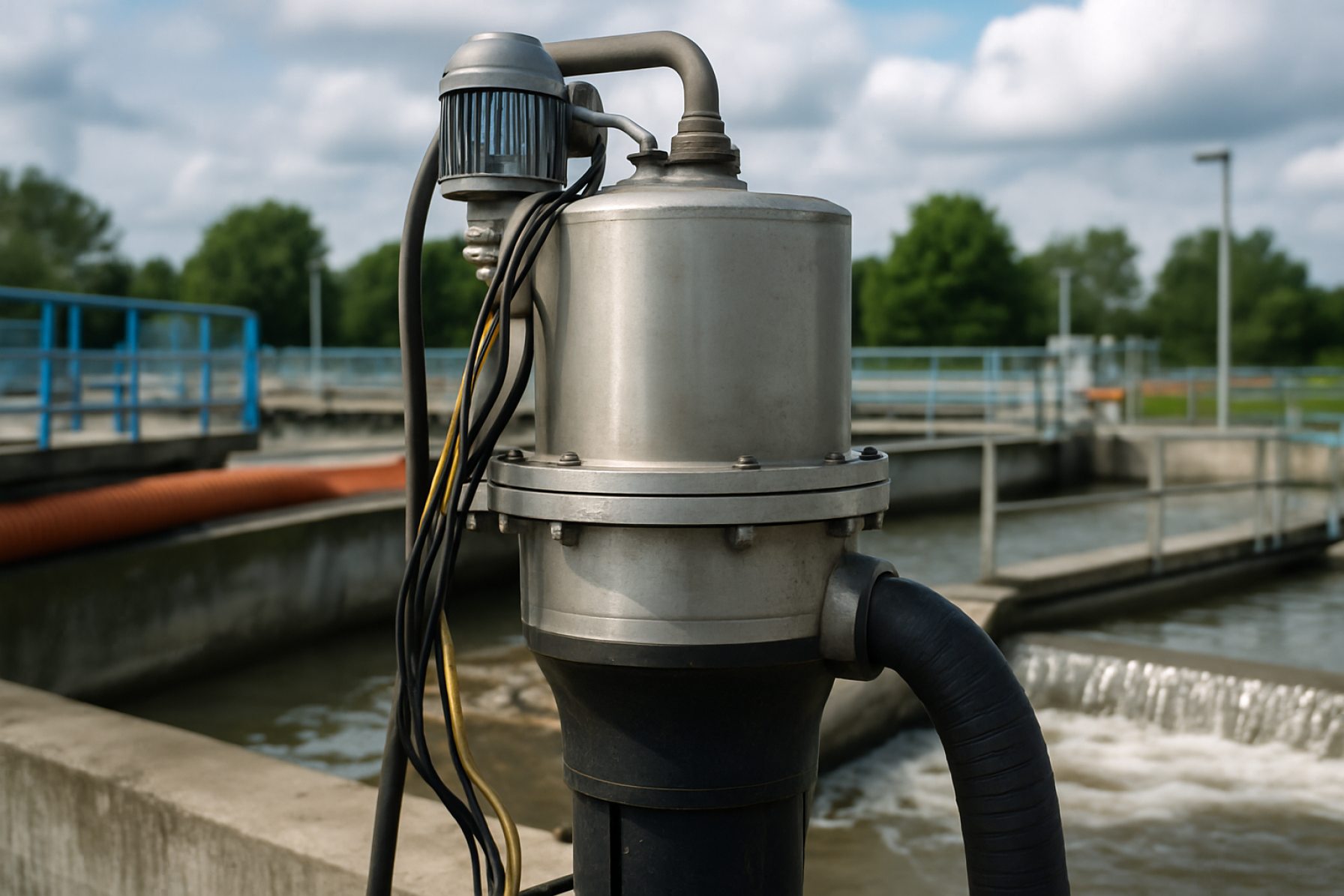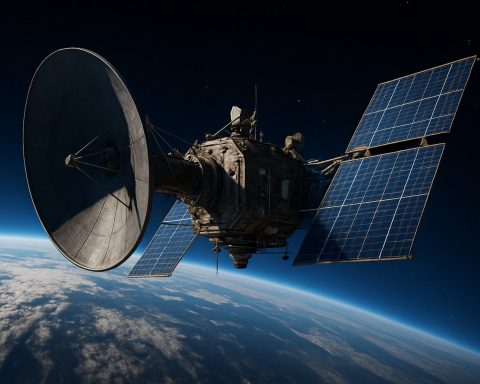Table of Contents
- Executive Summary: Key 2025 Insights & Forecasts to 2030
- Market Size & Growth Projections: Global & Regional Analysis
- Technology Evolution: Smart Sensors, Automation, and IoT Integration
- Regulatory Landscape: New Environmental Standards and Compliance Trends
- Competitive Landscape: Leading Manufacturers & Strategic Moves
- Innovative Materials & Design Trends in Dewatering Devices
- End-User Applications: Mining, Construction, Wastewater & Beyond
- Sustainability and Energy Efficiency: Meeting Green Initiatives
- Challenges & Barriers: Supply Chain, Costs, and Technical Hurdles
- Future Outlook: Disruptive Opportunities and Investment Hotspots
- Sources & References
Executive Summary: Key 2025 Insights & Forecasts to 2030
In 2025, dewatering device design remains a critical focus for industries such as municipal water treatment, mining, food processing, and construction, driven by ongoing demands for water conservation, regulatory compliance, and operational efficiency. Recent years have seen a marked shift toward compact, energy-efficient, and modular systems that can handle variable sludge characteristics and deliver higher solids capture rates. Manufacturers are integrating advanced automation, sensor-based controls, and remote monitoring features to improve process reliability and reduce maintenance costs. Notably, trends indicate a rising adoption of screw press, decanter centrifuge, and membrane-based technologies, each offering different performance and footprint advantages.
Recent product releases and upgrades from major sector players such as Veolia Water Technologies and Xylem highlight the industry’s pivot toward digitalization and sustainability. For instance, systems now often incorporate IoT-enabled diagnostics and energy optimization algorithms, allowing real-time adjustment to changing influent conditions. These advancements are particularly relevant as industries face stricter effluent and biosolids disposal regulations anticipated through 2030, especially in the European Union and North America.
Data from leading equipment suppliers suggests a steady increase in demand for devices capable of handling higher throughput with lower energy input. For example, Andritz has reported expanded pilot programs for high-efficiency belt presses and centrifuges targeting industrial clients focused on carbon footprint reduction. Meanwhile, the expansion of municipal infrastructure in emerging regions is driving demand for cost-effective, low-maintenance polymer dosing systems and compact dewatering units.
Looking ahead, the outlook for dewatering device design through 2030 is shaped by several core drivers. First, escalating water scarcity and climate change pressures will push innovation in water reuse and sludge minimization. Second, the proliferation of digital water management platforms is anticipated to facilitate predictive maintenance and lifecycle optimization, with real-time data analytics supporting proactive interventions. Third, circular economy principles are expected to gain traction, with device designs increasingly accommodating resource recovery—such as phosphorus extraction and biogas production—alongside traditional dewatering.
Overall, the dewatering device market in 2025 is characterized by rapid technological convergence and a commitment to sustainability, with key manufacturers and utilities actively investing in next-generation systems. As regulatory standards continue to tighten and operational challenges grow, ongoing innovation in design and integration is set to define sector competitiveness and environmental impact through the end of the decade.
Market Size & Growth Projections: Global & Regional Analysis
The dewatering device design market is positioned for significant growth in 2025, driven by increasing demands from sectors such as municipal wastewater treatment, mining, construction, and industrial processing. Globally, stricter environmental regulations and sustainability initiatives are compelling industries to adopt advanced dewatering equipment that minimizes sludge volume and improves water recovery. Major manufacturers and solution providers are expanding their product portfolios to address the evolving design and operational needs, particularly in emerging regions.
In 2025, the global market for dewatering devices—including belt filter presses, centrifuges, screw presses, and chamber filter presses—is expected to advance steadily. North America and Europe continue to show robust demand, supported by ongoing infrastructure upgrades and regulatory compliance requirements for sludge management. The United States Environmental Protection Agency (EPA) maintains stringent standards that fuel adoption of innovative dewatering designs, especially among municipal utilities and industrial plants. Leading regional suppliers such as Veolia Water Technologies and Xylem are actively expanding their portfolios with energy-efficient and automated systems.
Asia-Pacific is projected to exhibit the highest growth rate over the next few years, attributed to rapid urbanization, expanding industrial bases, and heightened focus on water reuse. China and India, in particular, are investing heavily in new wastewater treatment facilities and upgrading existing infrastructure, driving demand for locally-adapted dewatering device designs. Companies such as SUEZ and ANDRITZ are increasing their presence in the region, emphasizing modular and scalable solutions suitable for variable feed conditions.
In the Middle East and Africa, investment in water treatment and desalination projects is creating new opportunities for specialized dewatering equipment. The market outlook is further buoyed by the adoption of digital monitoring and control features, as manufacturers integrate IoT and automation into device designs. This trend is evident in offerings from global players like Huber SE and Fluidquip, who are leveraging technology to improve equipment efficiency and reduce operational costs.
Looking ahead, the dewatering device design market is likely to see intensified competition, ongoing product innovation, and increasing localization of manufacturing in key regional markets. Continued regulatory focus on wastewater and sludge management will remain a central growth driver, ensuring steady demand for advanced dewatering solutions worldwide.
Technology Evolution: Smart Sensors, Automation, and IoT Integration
Dewatering device design in 2025 is being fundamentally reshaped by the integration of smart sensors, advanced automation, and Internet of Things (IoT) technologies. These advancements are enabling real-time monitoring, predictive maintenance, and improved operational efficiency across diverse dewatering applications, from municipal wastewater treatment to mining and construction dewatering.
Smart sensors now form the backbone of modern dewatering systems, providing continuous data on parameters such as flow rates, turbidity, solids concentration, and equipment health. Major manufacturers like Grundfos and Xylem have embedded sensor arrays and digital communication capabilities into their latest pump and dewatering equipment. These sensors facilitate automated adjustments in pump operation, ensuring optimal performance while reducing energy consumption and minimizing downtime.
Automation is another key trend, with programmable logic controllers (PLCs) and remote control interfaces increasingly standard in new dewatering installations. Companies like Sulzer are deploying automation platforms that allow operators to manage multiple devices from centralized dashboards, either on-site or remotely. This trend is enhanced by the adoption of machine learning algorithms that analyze sensor data to predict component wear, detect anomalies, and schedule maintenance before failures occur.
IoT integration is accelerating the evolution towards “connected dewatering,” where devices communicate seamlessly with cloud-based analytics platforms. Grundfos and Xylem have both launched IoT-enabled solutions that provide operators with real-time visibility into system status and performance metrics, supporting proactive decision-making and reducing operational costs. These platforms also facilitate integration with broader site management and environmental compliance systems, improving reporting accuracy and regulatory adherence.
Looking ahead, the next few years are expected to see broader adoption of edge computing, where data processing occurs locally at the device level, reducing latency and bandwidth needs. Developments in wireless sensor networks and battery technologies will enable even more flexible deployment in remote or hard-to-access sites. Furthermore, as sustainability pressures grow, smart dewatering systems will increasingly incorporate energy optimization features and integration with renewable energy sources.
In summary, the convergence of smart sensors, automation, and IoT is redefining dewatering device design for 2025 and beyond, promising greater efficiency, lower costs, and more sustainable operations for industries worldwide.
Regulatory Landscape: New Environmental Standards and Compliance Trends
The regulatory landscape for dewatering device design is experiencing significant evolution in 2025, driven by tightening environmental standards and a global push for sustainable water management. Regulatory agencies across North America, Europe, and parts of Asia are implementing stricter discharge limits on total suspended solids (TSS), nutrient content, and heavy metals in effluents from industrial and municipal dewatering processes. This is compelling manufacturers to innovate and adapt their device designs to ensure compliance.
In the United States, the U.S. Environmental Protection Agency continues to update effluent guidelines under the Clean Water Act, with recent amendments focusing on reducing the environmental footprint of industries such as mining, construction, and wastewater treatment. These updates demand higher removal efficiencies and increased reliability from dewatering equipment, leading to the integration of automated monitoring systems and advanced filtration technologies in new designs.
The European Union’s Water Framework Directive remains a benchmark, with member states enforcing even more stringent local standards. Recent directives have set ambitious targets for reducing microplastics and emerging contaminants in water streams, directly influencing the material selection, filtration precision, and operational protocols of dewatering devices. Companies like Andritz AG and Veolia are responding by developing modular and scalable systems that facilitate rapid adaptation to changing compliance requirements.
In Asia, particularly in China and Japan, national standards for wastewater and sludge management are being tightened in response to urbanization and environmental pressures. The Chinese Ministry of Ecology and Environment has issued new norms on sludge dewatering and disposal, requiring higher degrees of dryness and reduced leachate contamination, which is driving local manufacturers to invest in novel polymer conditioning and high-pressure mechanical dehydration technologies.
Across these regions, the trend toward digitalization is notable. Regulatory bodies are increasingly mandating real-time data reporting and remote monitoring for compliance verification, prompting equipment suppliers to embed Industrial Internet of Things (IIoT) capabilities in their products. For example, Huber SE and other leading players are equipping dewatering devices with smart sensors and cloud-based analytics to streamline regulatory reporting and predictive maintenance.
Looking forward to the next few years, the regulatory trajectory suggests continued tightening of standards, especially concerning trace contaminants and energy efficiency. Dewatering device design will likely emphasize resource recovery, minimal chemical usage, and lifecycle sustainability, as manufacturers and end-users alike adapt to the increasingly rigorous compliance environment.
Competitive Landscape: Leading Manufacturers & Strategic Moves
The competitive landscape for dewatering device design in 2025 is characterized by both consolidation among established global manufacturers and the emergence of specialized innovators focusing on energy efficiency, automation, and sustainability. The leading manufacturers remain diversified engineering groups with international reach, such as Andritz, Veolia Water Technologies, and Xylem, each offering extensive portfolios of dewatering solutions tailored for municipal, industrial, and mining sectors.
Recent years have seen these companies invest heavily in R&D to address stricter environmental regulations and operational cost pressures. For example, Andritz has focused on improving the energy efficiency and automation of their belt filter presses and decanter centrifuges, integrating IoT-based monitoring for predictive maintenance and performance analytics. Xylem has highlighted its smart dewatering pumps and control systems, which optimize performance via real-time monitoring and adjustment, reducing downtime and manual intervention. Similarly, Veolia Water Technologies continues to expand its range of modular systems, enabling quicker deployment and easier scalability, especially for industrial clients with fluctuating wastewater volumes.
On the strategic front, partnerships and acquisitions remain common. In 2024, Andritz expanded its footprint in Asia and the Middle East by acquiring regional engineering firms specializing in local customization of dewatering systems. Xylem has entered into collaborations with automation technology providers, aiming to enhance the digital capabilities of its product range. Veolia Water Technologies is increasingly focusing on circular economy solutions, integrating sludge-to-energy modules with dewatering devices to help clients recover resources and reduce waste.
Looking ahead to the next few years, competition is expected to intensify around the integration of advanced sensors, artificial intelligence, and remote diagnostics within dewatering equipment. Sustainability will remain a key differentiator, with manufacturers investing in lower-carbon materials and designs that minimize water and energy consumption. The market is also witnessing the rise of specialized firms targeting niche applications—such as high-solids mining slurries or food industry byproducts—which may drive further innovation and collaborations with larger players. Overall, the sector’s competitive dynamics will reflect the dual pressures of regulatory compliance and operational excellence, with leaders distinguished by their ability to deliver smart, efficient, and adaptable dewatering solutions.
Innovative Materials & Design Trends in Dewatering Devices
Dewatering device design is rapidly evolving in 2025 as industries seek improved efficiency, sustainability, and adaptability in water management. One of the most significant trends is the integration of advanced materials that enhance both mechanical performance and environmental compatibility. Manufacturers are increasingly using high-strength polymers, corrosion-resistant alloys, and composite materials to extend device lifespans and reduce maintenance requirements. For example, leading suppliers such as Andritz and Fluidquip have introduced dewatering equipment featuring wear-resistant linings and modular components, allowing for more flexible deployment across diverse applications.
In parallel, design innovation is focusing on energy efficiency and automation. The latest generation of belt filter presses and centrifuges utilize variable frequency drives and intelligent control systems to optimize performance based on real-time feed characteristics, reducing energy consumption and operational costs. Companies like Veolia Water Technologies are at the forefront, integrating digital monitoring and predictive maintenance into their dewatering solutions, which enables remote diagnostics and minimizes downtime.
Sustainability remains a key driver, with designers aiming to minimize the environmental footprint of both the dewatering process and the device itself. This includes the use of recyclable materials, reduced chemical consumption, and closed-loop water recovery systems. For instance, SUEZ Water Technologies & Solutions has developed systems that recover and reuse a high percentage of process water while producing drier solids, reducing disposal costs and environmental impact.
Looking ahead to the next few years, the sector is poised for further transformation. The adoption of Internet of Things (IoT) technologies and machine learning algorithms is expected to accelerate, enabling dynamic process optimization and further reducing resource consumption. Additionally, there is a growing emphasis on modular, scalable designs that cater to decentralized or smaller-scale applications, particularly in emerging markets and remote industrial sites. Industry stakeholders are also monitoring developments in nanomaterials and advanced membrane technologies, which could unlock new levels of efficiency and selectivity in solid-liquid separation processes. As regulatory and sustainability pressures mount, collaborative innovation among manufacturers, utilities, and technology providers will likely shape the next wave of dewatering device design.
End-User Applications: Mining, Construction, Wastewater & Beyond
Dewatering device design continues to evolve rapidly in 2025, propelled by the pressing demands of major end-user sectors such as mining, construction, and wastewater treatment. Modern dewatering systems must address increasingly stringent environmental regulations, heightened operational efficiency, and adaptation to challenging site conditions. In mining, for example, the shift towards sustainable operations is driving the adoption of advanced tailings dewatering devices. Manufacturers are integrating high-capacity, energy-efficient solutions such as filter presses and centrifuges, enabling mines to reduce water consumption and reach dry-stack tailings—an approach aligned with global best practices. Companies like ANDRITZ and Metso Outotec are innovating with modular and automated systems that can be tailored to varying ore characteristics and site constraints, reflecting the sector’s push for both flexibility and reliability.
In the construction industry, particularly in urban infrastructure and tunneling projects, compact and mobile dewatering units are gaining traction. The latest devices utilize smart sensors and remote monitoring, enabling real-time adjustment to groundwater conditions and thus minimizing disruption. Leading suppliers such as Xylem are deploying pumps and separators that blend robust mechanical design with IoT-based analytics to enhance predictive maintenance and optimize energy use—a critical factor as project timelines shrink and cost pressures mount.
Wastewater treatment facilities, meanwhile, face escalating loads and stricter discharge standards. Here, the focus is on dewatering devices capable of handling variable sludge characteristics, including high solids content and the presence of emerging contaminants. The sector is witnessing the integration of polymer dosing systems, high-pressure belt presses, and advanced screw presses that deliver improved cake dryness and reduced chemical consumption. Notable vendors such as Veolia Water Technologies are emphasizing designs that allow for easy scalability and compatibility with digital process control platforms, supporting operators in meeting regulatory compliance efficiently.
Looking ahead, the design outlook for dewatering devices is characterized by further automation, modularity, and sustainability. The next few years are expected to bring increased adoption of AI-driven control systems, material innovations for enhanced corrosion resistance, and hybrid devices capable of serving multiple end-user applications. With industry leaders investing in R&D and digital transformation, the market is poised for solutions that not only address today’s operational challenges but also anticipate evolving environmental and economic requirements across mining, construction, wastewater, and emerging sectors.
Sustainability and Energy Efficiency: Meeting Green Initiatives
In 2025, the design of dewatering devices is increasingly shaped by the imperative to meet sustainability goals and deliver greater energy efficiency. As industrial water management faces heightened regulatory scrutiny and climate-driven pressures, manufacturers and operators are prioritizing the reduction of energy consumption, water footprint, and overall environmental impact in their equipment choices.
Modern dewatering devices—used across industries such as mining, municipal wastewater, and food processing—are now integrating technologies like high-efficiency motors, variable frequency drives, and advanced automation. These enhancements reduce operational energy demands while optimizing process control, leading to significant carbon footprint reductions. For example, major suppliers like Sulzer and Xylem are deploying smart solutions that leverage real-time monitoring and adaptive control systems to ensure dewatering pumps and centrifuges run only when needed and at optimal speeds.
A key trend in 2025 is the shift toward circularity, with device designs enabling easier resource recovery and material reuse. For instance, sludge dewatering units now often include features that facilitate the separation and capture of valuable byproducts, aligning with circular economy principles. Companies such as ANDRITZ are developing dewatering technologies that not only minimize residual waste but also recover energy in the form of biogas or heat, further enhancing sustainability credentials.
Data from leading manufacturers indicate that energy consumption in dewatering operations can be reduced by up to 30% with the adoption of new-generation devices equipped with optimized hydraulics and automated controls. These gains are becoming standard expectations as both private and municipal clients seek to meet net-zero and green initiative targets.
Looking ahead, regulatory and stakeholder pressure will likely drive further R&D into low-carbon materials for device construction, as well as the expansion of digital twin and IoT-enabled predictive maintenance platforms. Such innovations are anticipated to extend equipment lifespans, lower lifecycle energy costs, and support compliance with evolving sustainability standards.
Overall, the outlook for dewatering device design in 2025 and the near future is defined by an accelerated push toward energy efficiency, resource recovery, and integration with broader environmental management systems—signaling a transformative period for the sector as it aligns with global green initiatives.
Challenges & Barriers: Supply Chain, Costs, and Technical Hurdles
Dewatering device design in 2025 faces a series of persistent and emerging challenges, shaped by global supply chain dynamics, cost pressures, and evolving technical requirements. The sector—which includes filtration presses, centrifuges, and membrane-based systems—has seen supply chain volatility impact both the availability and cost of critical components such as specialized polymers, stainless steels, and control electronics. For instance, manufacturers like ANDRITZ and Veolia Water Technologies have publicly acknowledged ongoing procurement delays and price increases for key materials, which impact delivery schedules and force device designers to consider alternative materials or redesigns to maintain production timelines.
Cost remains a major barrier, particularly as dewatering technologies grow more complex to meet stricter regulatory and environmental requirements. Compliance with new standards for sludge handling and water reuse—such as those implemented in the EU and anticipated for North America—drives demand for higher-performance devices but also increases R&D and component costs. The need for enhanced automation, sensor integration, and remote monitoring, as promoted by solution providers like SUEZ and Alfa Laval, requires investment in digital infrastructure and skilled personnel, further raising capital expenses for both manufacturers and end users.
Technical hurdles also persist, especially regarding efficiency, energy consumption, and adaptability to diverse feedstocks. Dewatering devices must accommodate highly variable input—ranging from municipal sludge to industrial slurries—necessitating flexible designs. Achieving high dryness levels while minimizing energy use is a persistent engineering challenge. Companies such as Xylem and HUBER SE are pursuing advances in screw press and centrifuge designs to address these hurdles, but practical implementation often lags behind laboratory success due to scaling difficulties and the unpredictable nature of real-world feed materials.
Outlook for the coming years suggests incremental progress rather than breakthrough solutions. Regionalization of supply chains and efforts to localize production—as seen in initiatives by Grupo Pine and other regional players—may help mitigate logistics risks but are unlikely to fully resolve cost pressures in the near term. Industry bodies such as the Water Environment Federation continue to advocate for standardized testing and interoperability, which could lower technical barriers, but widespread adoption is gradual. In summary, dewatering device design in 2025 will continue to balance innovation with practical constraints, navigating a landscape marked by supply chain uncertainties, rising costs, and demanding performance targets.
Future Outlook: Disruptive Opportunities and Investment Hotspots
The landscape of dewatering device design is poised for significant transformation in 2025 and the coming years, driven by the convergence of sustainability imperatives, resource efficiency goals, and advanced manufacturing techniques. As industries ranging from mining to municipal wastewater treatment face tightening regulatory frameworks and rising operational costs, there is increasing investment in disruptive dewatering technologies focused on energy reduction, automation, and circular resource management.
One of the most notable trends is the integration of smart sensors and real-time monitoring within dewatering equipment, enabling predictive maintenance and optimized process control. Major manufacturers such as ANDRITZ and Veolia Water Technologies are actively developing systems that leverage IoT connectivity to maximize throughput while minimizing energy and chemical inputs. These advances not only reduce downtime and operating expenses but also align with broader ESG (Environmental, Social, and Governance) objectives that are increasingly central to investment decisions.
Membrane-based dewatering technologies, including advanced ultrafiltration and ceramic membrane systems, are emerging as disruptive alternatives to traditional centrifuges and filter presses. Companies like SUEZ Water Technologies & Solutions are investing in R&D to scale up such systems for industrial and municipal applications, targeting higher solids capture rates and lower fouling tendencies. These innovations are expected to gain greater market share, particularly in regions with stringent water reuse regulations and high sludge disposal costs.
The push toward modular and mobile dewatering units is another area attracting investment, especially in sectors such as construction, oil and gas, and disaster response. Suppliers including Xylem are introducing compact, plug-and-play solutions designed for rapid deployment and flexible operation. Such devices are anticipated to address the growing need for decentralized treatment and adaptability in remote or temporary installations.
Looking forward, investment hotspots are likely to concentrate around digitalization, hybrid process integration (combining physical, chemical, and biological dewatering steps), and the valorization of recovered byproducts such as biogas or fertilizers. Strategic partnerships between technology providers, utilities, and end-users are expected to accelerate commercialization and adoption. As global water stress intensifies and circular economy principles take hold, disruptive dewatering device design will remain a focal point for both technological innovation and capital allocation.














